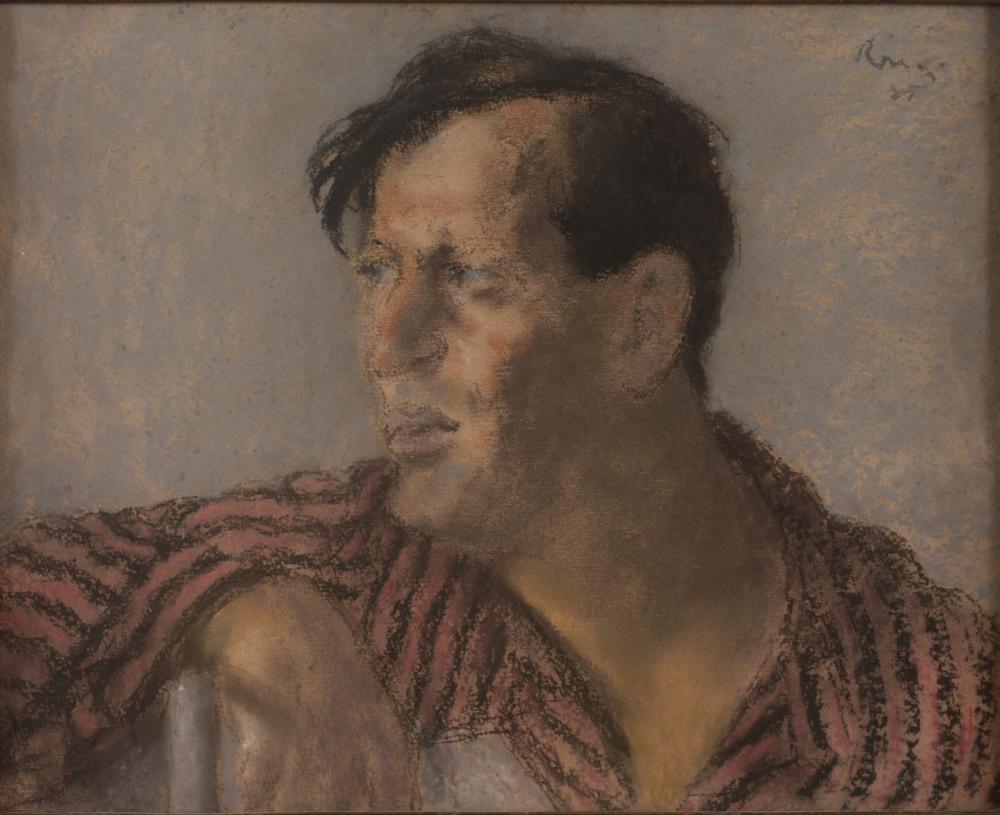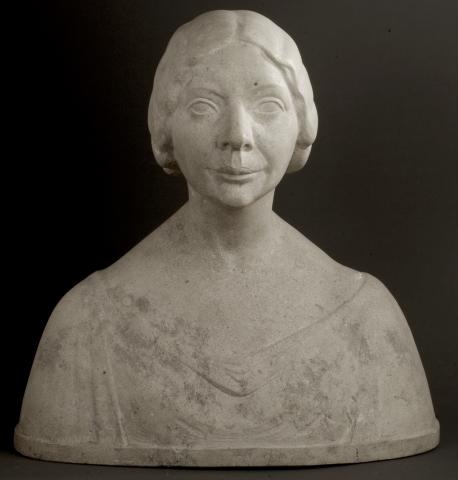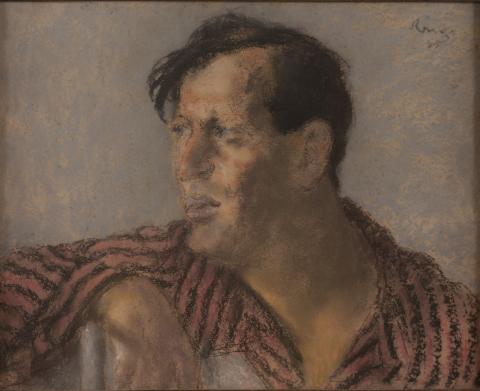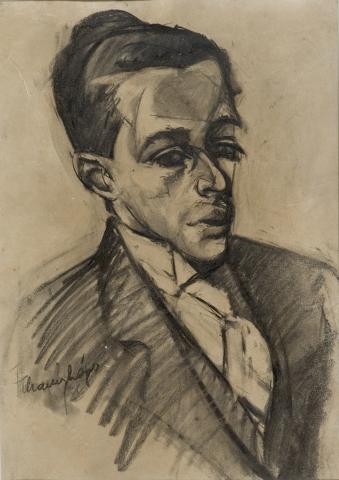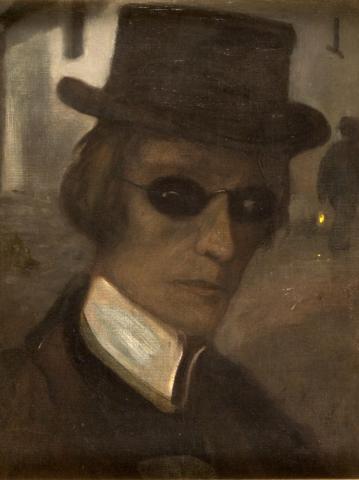The Collection of Paintings is part of the Fine Arts Collection. Of the 650 pictures, two-thirds are portraits of writers and poets, yet there are also works which apparently are not connected with literature (landscapes, interiors, artworks on historical themes, etc.). They were mainly acquired by the museum from the property of writers. The oldest, depicting the ancestors of Kazinczy, date from the 18th century, but the overwhelming majority of paintings constitute the work of 20th-century masters. One of the museum’s most valuable paintings is Lajos Gulácsy’s masterpiece The Spiritualist, which was acquired from the estate of the photographer Aladár Székely. Among the special items in the collection are the paintings by such great writers as Imre Madách and Mór Jókai. The continuity of the growth of the collection of paintings is represented by portraits of writers by contemporary artists and works inspired by literature.
The Collection of Graphic Art comprises approximately 10,000 works. The two main groups of partly 19th-century and mainly 20th-century and contemporary graphic art are the portraits of writers and poets, and literary illustrations. The majority of the portraits are 19th-century lithographs and engravings, while the illustrations are graphic works and title page designs made for volumes mostly by Hungarian and less frequently by foreign authors. Besides illustrations and portraits, a special section of the collection includes drawings by writers and poets who, in addition to writing, were also artists or drew occasionally, such as Géza Csáth, Mór Jókai and Sándor Weöres. The collection also includes drawings and prints depicting memorial places of literature, townscapes, fashion, ex libris, caricatures of writers, as well as visual poetry art and picture poems. Finally, artworks which were bought by or presented to writers and which decorated their homes are also part of the collection.
The Collection of Sculpture comprises more than 600, mainly 20th-century statues and statuettes. The majority, which are varied in terms of technique, style and genre, are portraits of Hungarian writers. Some 30 casts of life and death masks rendering the facial features of noted writers make up an independent section of the collection. It includes one of the oldest items in the collection, Ferencz Kazinczy’s life mask.
The Collection of Medals contains approximately 3000 medals and plaquettes with literary themes involving very different styles and materials, as well as different techniques.
The Collection of Photographs comprises around 30,000 pictures. The majority are portraits of writers or group pictures and some of the photographs have primarily documentary value – for example, amateur family or simple ID photos. A smaller part of the collection is accounted for by art photographs or studio pictures taken by master photographers. Photos which have been taken by writers themselves are rare and thus special (e.g. art photos taken by Péter Nádas, Sophie Babits Török’s photographs and Tibor Déry’s amateur photos.)
The Collection of Relics contains all sorts of objects, including László Nagy’s nail brush, Attila József’s pocket watch and wallet, Ervin Lázár’s penknife, Mihály Vörösmarty’s chess set, Zsigmond Móricz’s lace-up boots, Géza Ottlik’s armchair and Dezső Kosztolányi’s bookshelf. Items formerly among the possessions of writers can be said to constitute a special category of relics: for example, writing desks, typewriters, pens, spectacles, lamps and chairs. Items of clothing that used to be worn by writers exude a special atmosphere – Endre Ady’s hat or Milán Füst’s swimming suit, for example. Mihály Babits’s typewriter which survived after being damaged in an air raid, and the white shirt worn by Attila József when he was hit by a train are among the unsettling relics. This collection also contains the personal collections of writers themselves, such as Mór Jókai’s snail shells and minerals. Items that reflect the personality and environment of writers can not only provide useful information for literary historical research, for example, but are also indispensible items of the museum’s exhibitions.
